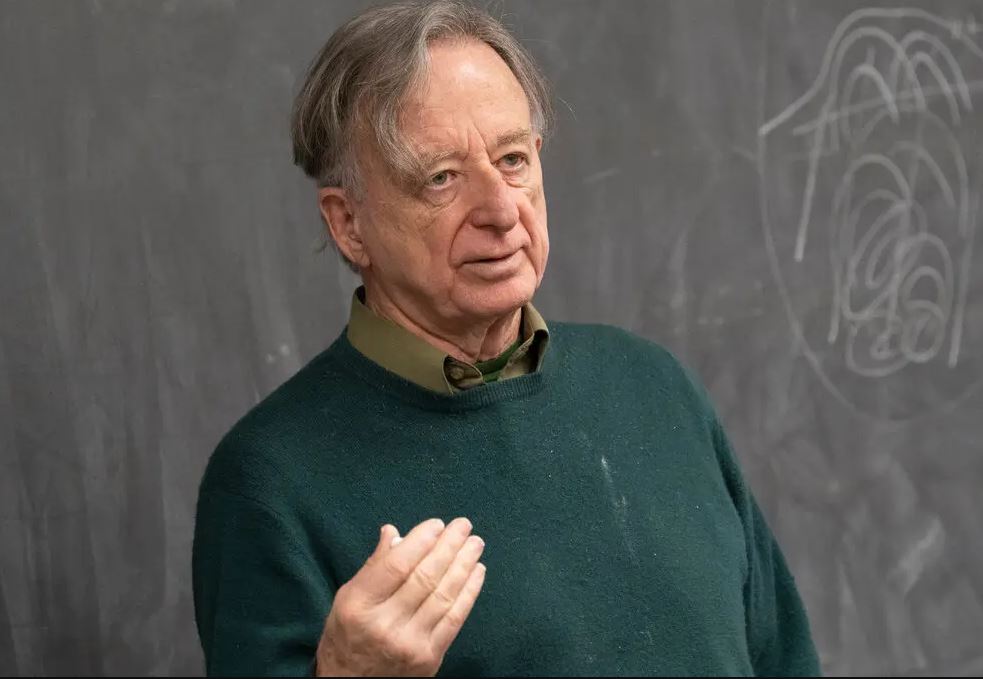Dennis P. Sullivan, a professor of mathematics at Stony Brook University and the City University of New York Graduate Center, has been named the winner of this year’s Abel Prize, which is considered the mathematical equivalent of the Nobel Prize.
As stated in the citation, Dr. Sullivan was recognised “for his ground-breaking contributions to topology in its widest meaning,” particularly its algebraic, geometric, and dynamical aspects. The Norwegian Academy of Science and Letters is the body that administers the Abel Prize.
Topology is the study of space and forms, and the majority of Dr. Sullivan’s work concerns what mathematicians refer to as manifolds, which are higher-dimensional versions of the two-dimensional surfaces that we are familiar with from our everyday lives. While that work is purely theoretical, some of his latest studies on fluid flows and turbulence might contribute to our knowledge of storm patterns, the dispersions of air pollutants, and the whorls of vortices that form behind aircraft wings, among other things.
There is no Nobel Prize in mathematics, and for decades, the Fields Medals were the most prestigious honours in the field, given out in small batches every four years to the most talented mathematicians under the age of 40 who had made significant contributions to the field.
The Abel Prize, named after Norwegian mathematician Niels Henrik Abel, is structured in a similar manner as the Nobel Prize. Since 2003, it has been awarded on a yearly basis to recognise significant breakthroughs in mathematics. Previous laureates have included Andrew J. Wiles, who proved Fermat’s last theorem and is now a professor at the University of Oxford; John F. Nash Jr., whose life was depicted in the film “A Beautiful Mind”; and Karen Uhlenbeck, an emeritus professor at the University of Texas at Austin who in 2019 became the first woman to receive an Abel Award for mathematics.
In a parallel world, it is possible that Dr. Sullivan worked as a chemical engineer for the majority of his career. Then he switched to political science for the rest of his college career. During an advanced mathematics lesson, the professor drew two shapes on the blackboard: one was a circle, and the other was more blobby, like a kidney, which was confusing to the students. Afterwards, he said that either one could be stretched to fit on the other.
That wasn’t very shocking, to be honest. A few days later, however, the lecturer explained that there was an easy — and in many ways, only one easy — method to stretch in such a manner that the stretching was the same in all directions.
Dr. Sullivan was an early user of a method known as surgical theory, which was developed by Dr. Sullivan. Through the use of this technology, researchers were able to conduct unique mathematical studies such as cutting two round holes in a sphere and then adhering one end of a tube to the inside of each hole on the exterior of the sphere, creating a kettleball-like form.
Doctor Sullivan demonstrated that the assumption was virtually always valid in five dimensions or more, contrary to the popular belief that it was true for all manifolds.
According to the results of the study, there are a few cases in which two triangulations of a five-dimensional manifold are not comparable to one another. Other mathematicians later demonstrated that the conjecture was incorrect for numerous four-dimensional manifolds, so disproving it.
He is most known for his contribution to the “Sullivan dictionary,” which connects dynamics with three-dimensional geometry and has been in use ever since. Using it as inspiration, he went on to verify a mathematical theorem that had been unanswered since the 1920s:
Dr. Sullivan was able to work out the mathematical roots of a phenomena known as period doubling that had been discovered and investigated by physicists as a result of the deep and unexpected linkages that existed between these fields.
In the words of Curtis T. McMullen, a Harvard mathematician who finished his doctoral studies with Dr. Sullivan as his mentor, “He brought in a whole new theory of complex dynamical systems.” As a result, “the instruments that he used, and even more so the parallels that he brought to light, have served as guidelines for practitioners ever since.”
Since then, Dr. Sullivan has worked on a variety of challenges in fluid dynamics.
While accepting the Balzan Prize for Mathematics in 2014, Dr. Sullivan expressed his desire to investigate if the theoretical tools he had built might be applied to practical issues such as hurricane prediction and the air resistance of aircraft wings.
Dr. Sullivan said that he was unable to demonstrate that he had developed superior computer models at this time. “However, I believe that we are on the correct route,” he said.

